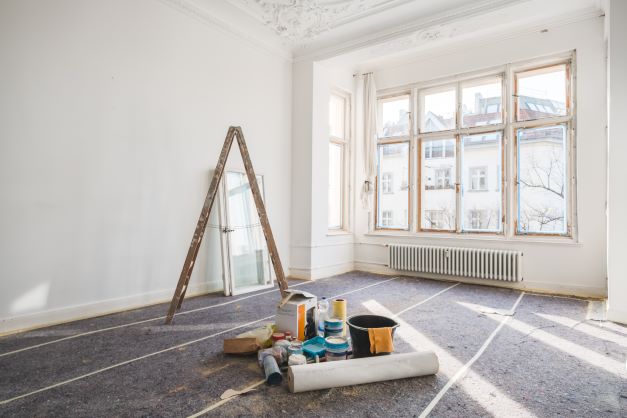Managing a property requires a lot of work if you intend to be a good landlord. When renting out a property you own to others, you have a duty of care to those tenants to some extent, which relates to the quality of the property and whether it’s considered habitable. This means that many landlords will have to spend a fair amount of their time ensuring that repairs are made to the property when needed and that the entire house or apartment is ready for new tenants to move into. However, knowing what to check is not always the easiest consideration, so we’ve put together this handy guide on important steps for preparing a property for your new tenants.
Conduct Safety Checks
Your first step is to ensure that the property is safe for people to live in. There are a number of things you’ll have to check here, but most notably, the electrical systems as well as the safety sensors such as fire alarms and carbon monoxide sensors. You’ll want to get an electrician in to check everything from the overall wiring of the property as well as the appliances you’ve provided for your tenants. Your property will need to pass an EICR or electrical installation condition report before tenants move in. This is a legal requirement, so don’t avoid this. You may also want to have them conduct PAT or portable appliance testing on things like kettles, toasters, and any other appliances you’re providing to ensure that these also meet safety standards. An appliance that fails these tests pose a number of risks to your tenants and the property, including electrical shocks and fires.
Clean The Property
There’s a strong possibility that your tenants are going to show your property the same level of care as you have, and so if you rent yours out and it’s not been cleaned properly or has significant, obvious damage to carpets, walls, and fittings, then your tenants may not treat the place with respect. The better condition that the property is in, the more chance you have of tenants being respectful and doing their best to ensure that the place remains in the condition it’s in now. You’ll also find that an untidy and unclean property is less likely to draw in tenants than if you’d spent time getting the place spotless. Consider cleaning or replacing carpets where needed, as well as cleaning out cupboards and appliances like the fridge, freezer, and oven. Hire a professional cleaner to take on this job if you’re unable to do it yourself.
Make Necessary Repairs
Alongside cleaning the property, you’re also responsible for making sure that things aren’t damaged and unfit for purpose when tenants move in. Broken furniture, including chairs, tables, countertops, and cupboards, aren’t okay to leave for your tenants to live with. Consider searching for handymen via sites like MyBuilder, to make repairs for you. As a landlord, it is your responsibility to ensure that the structure of your property and the exterior are repaired when necessary. Guttering, external piles, and doors and windows to the property should all be taken care of before tenants move in. You’ll also need to make sure that sinks, baths, showers, and toilets are all in good condition. As well as this, central heating, water supply, and electricity within the property should also be in working order.
Redecorate The Property
While not necessarily a requirement, a poorly decorated and designed property is going to reduce your chances of letting out your property quickly. It’s also going to reduce the perceived value of the property, and many might not be willing to pay what you’d like for it. It’s always a good idea to ensure that your property is decorated adequately, at least with clean and sleek décor that acts as a blank canvas for your tenants to decorate with temporary ornaments and their belongings. You could also go further than this and decorate the place to a very high standard, raising the value of the property to an acceptable level. This may be costly for you, but it can be a great investment, especially if you intend to sell the property at some point in the future.
Create An Inventory
Any damages that aren’t repaired, but are simply aesthetic damage that won’t have an impact on the lives of your tenants, should be documented by yourself before tenants move in. Use a landlord inventory template if you’re unsure of how to create your own. Of course, you should also let your tenants complete their own inventory, making a note of damages you may have missed. This allows you and your tenant to comfortably agree on the state that the property is in when they arrived and help you discern who is responsible for any future damages that could be paid for via their deposit. Landlords generally agree that simple wear and tear, such as scuffed paintwork, don’t warrant deposit deductions, so try to be conscious of this when assessing the property after tenants leave. However, major damage such as holes in walls, broken fixtures, and appliances can all warrant you deducting funds from the deposit to make necessary repairs.

